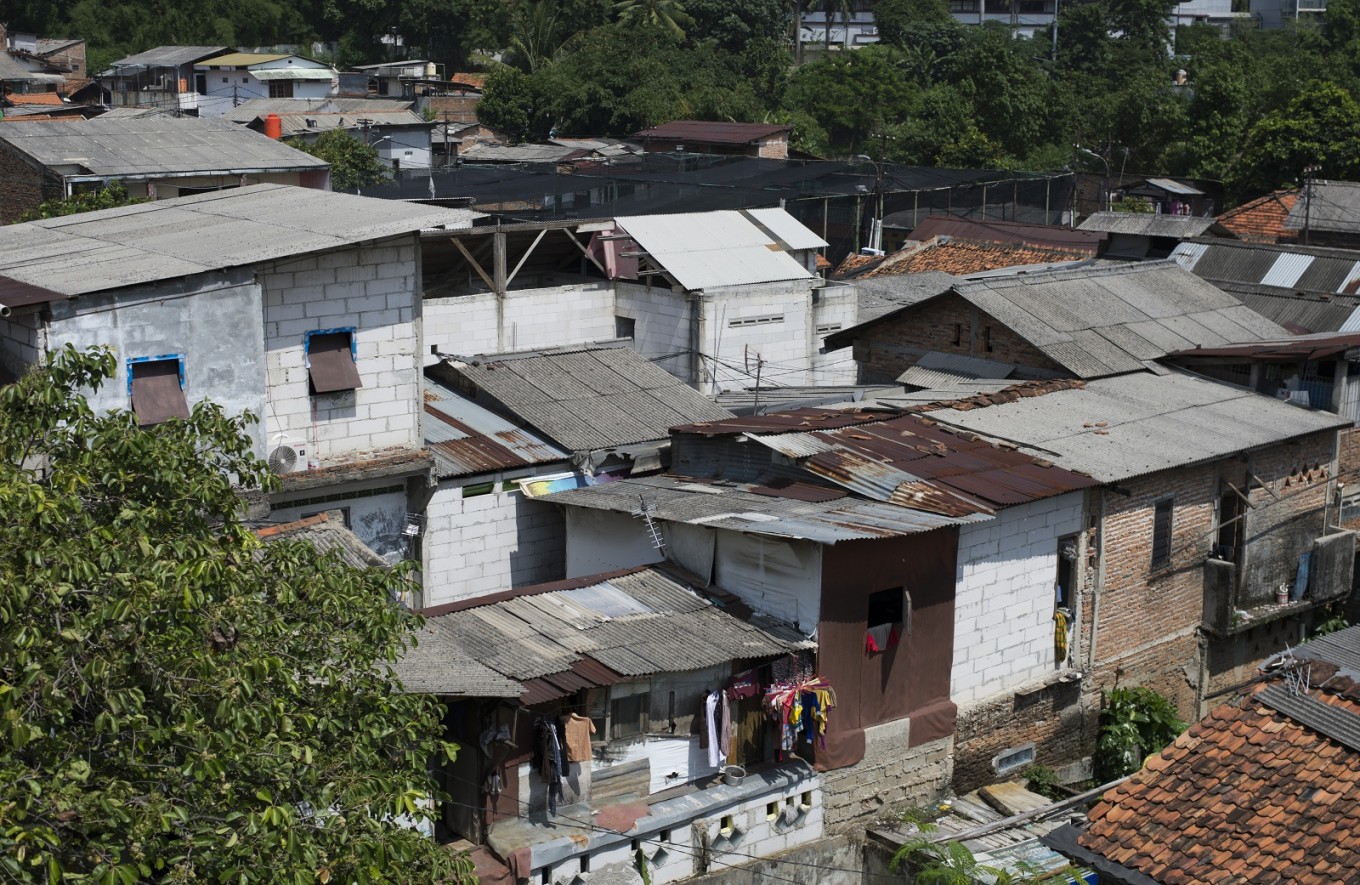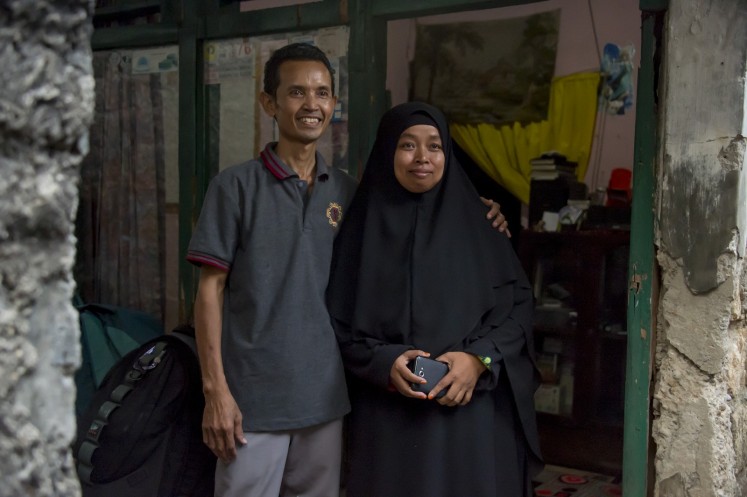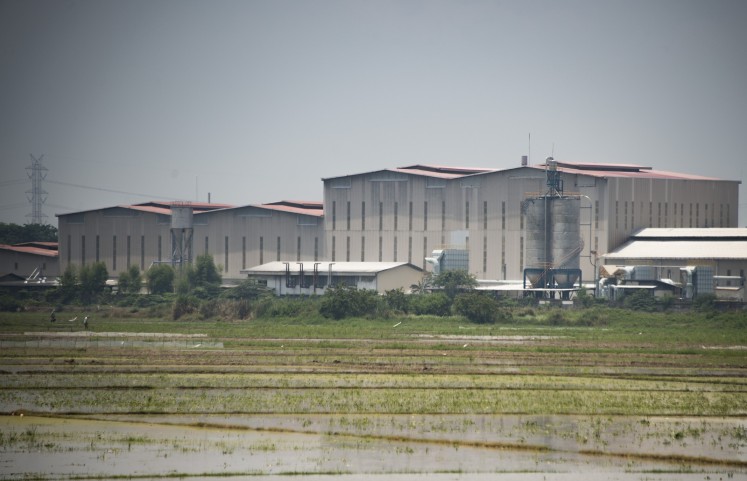Indonesia's asbestos 'time bomb'
Change Size
 This photograph taken on October 27, 2017 shows houses lined with roofing material made from asbestos in Jakarta. (AFP/Bay Ismoyo)
This photograph taken on October 27, 2017 shows houses lined with roofing material made from asbestos in Jakarta. (AFP/Bay Ismoyo)
T
he symptoms were mild and seemingly innocuous at first: mostly coughing and fatigue. But it wasn't long before Sriyono got a grim diagnosis -- he had asbestosis -- an incurable scarring of the lungs that often leads to cancer.
It was caused by decades of inhaling asbestos fibres at the factory where the 44-year-old still works outside the sprawling capital Jakarta.
"There was a feeling of shock," said the rail-thin Sriyono, who like many Indonesians goes by one name.
"There was no information telling us that asbestos could cause diseases like cancer when I got into the industry," he told AFP.
The soft-spoken father of three is the first person to win compensation for exposure to asbestos in Southeast Asia's biggest economy -- one of the world's top consumers of a toxic material blamed for more than 100,000 annual deaths globally.
He was awarded 57 million rupiah ($4,200) by the government this year, and he may not be the last: a local NGO is pushing for compensation in 15 similar cases.
Asbestos fibres that lodge in the lungs can cause diseases including lung cancer, mesothelioma and asbestosis, according to the World Health Organization (WHO).
Banned in more than 60 countries, including all members of the EU, the carcinogenic material is still widely used in developing countries for construction, textiles, brake pads and cheap insulation.
Canada, once the world's top producer of asbestos, announced a ban last year, but some other countries, including Russia and India, have resisted global efforts to outlaw it.
Read also: Pollution killed nine million people in 2015: Report
'Very high levels'

And asbestos use shows no sign of waning in Asia's emerging economies, said Ken Takahashi, director of the Asbestos Diseases Research Institute (ADRI) at the University of Sydney.
"The consumption in these countries remains at a very high level, exposing many workers and, eventually, as they go into the market and community there is the potential to expose the general population as well," he said.
Asia now accounts for more than 60 percent of world asbestos consumption.
Indonesia's use of the material grew by nearly six times from 1990 through 2012 when it peaked at an all-time high of 161,823 metric tons before slipping back to 109,000 metric tons in 2014, according to the latest data from the United States Geological Survey (USGS).
For years, Sriyono toiled away producing gland packing, which uses asbestos to seal systems such as pumps and shafts. He was never warned his health was at risk and did not wear safety equipment that could have kept him safe.
This limited awareness about the health hazards of asbestos is typical across the archipelago nation of more than 17,000 islands, while poor work safety standards compound the problem, health experts said.
"They let people use it and that means that people don't think it is dangerous," said Dr Anna Suraya, from the Occupational Doctors Association of Indonesia.
Read also: Sapu Jagad 2017 aims to remove 5 tons of rubbish from Indonesia's mountains
Families at risk

There are no definitive figures on the number of Indonesian workers directly exposed to asbestos.
The Indonesia Asbestos Ban Network (INA-BAN) estimates at least 4,000 people are directly involved in the manufacturing of asbestos products, but that does not include contract and other non-permanent employees or construction workers.
It also does not take into account the risk of secondary exposure among workers' families as people can bring asbestos fibres home with them on their hands, hair, clothes, shoes or on tools.
Nearly 180 Indonesian companies import asbestos either as a raw material or finished product.
Because it is cheap and durable, the national statistics agency estimates asbestos is found in about 10 percent of all homes for roofing. It can also be found in schools, markets and even hospitals, activists say.
Indonesia has taken some steps to minimise the impact with exposure limits and work safety regulations, but enforcement is haphazard and medical expertise in detecting asbestos-related disease remains low.
Jakarta, however, is not mulling an outright ban, saying it's focusing instead on getting the word out about the health risks.
"We've already started awareness-raising programmes, but of course Indonesia is very big and we have to do it gradually," said Kartini Rustandi, director of occupational health and sports at the ministry of health.
That worries some who warn that Indonesia is a public health time bomb and could suffer the fate of some developed nations that are awash in asbestos-related lawsuits.
Rian Irawan from INA-BAN said: "We have to join the asbestos ban now."









